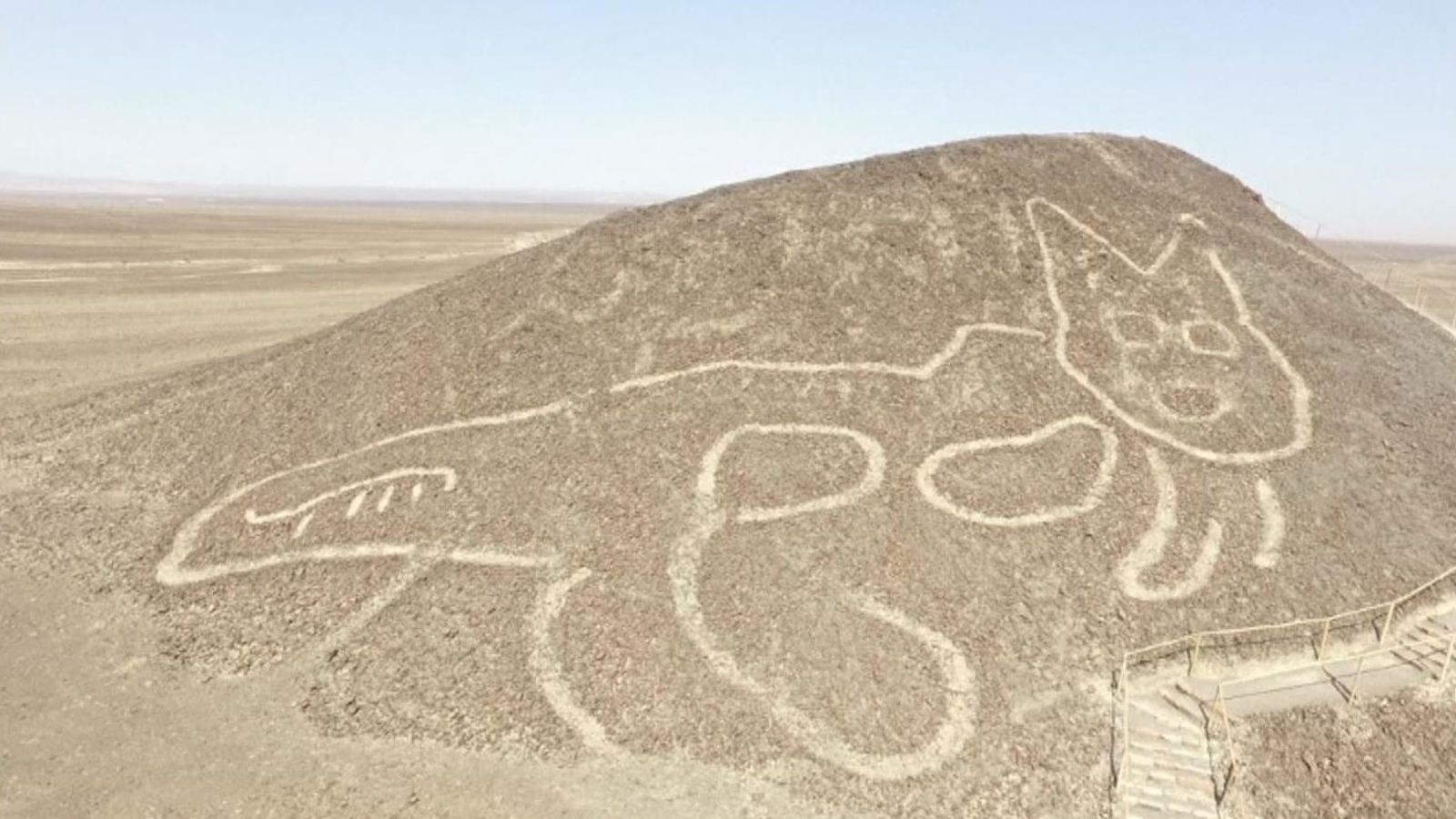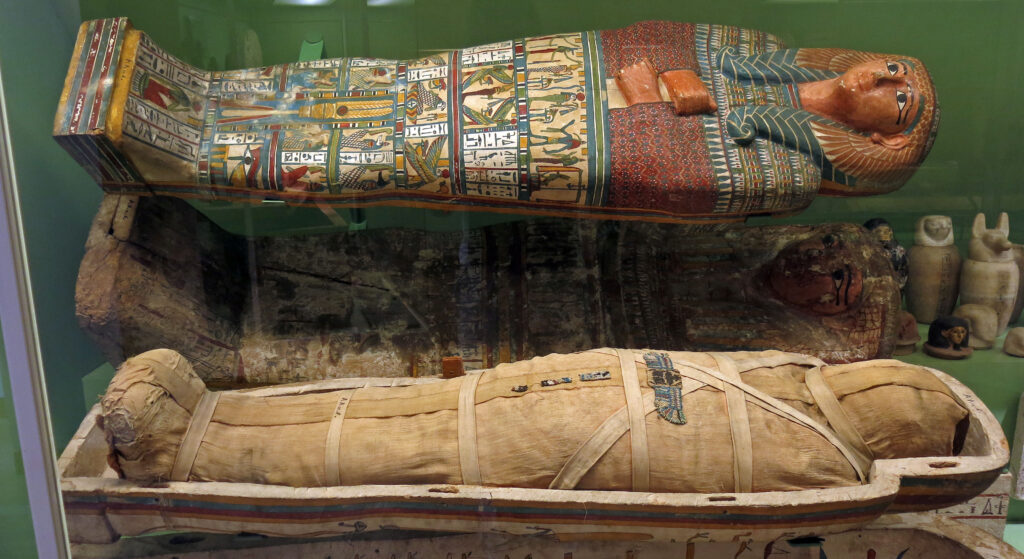Unsolved Enigmas of Ancient Civilizations
The Mysterious Nazca Lines in Peru
The mysterious Nazca Lines in Peru are one of the most enduring and intriguing unsolved enigmas of ancient civilizations. These geoglyphs, etched into the desert floor over 2,000 years ago by the Nazca culture, depict a range of images, including animals, plants, and abstract designs.
Stretches across the arid landscape near the southern coast of Peru, the Nazca Lines cover an area of approximately 170 square miles. The lines are only visible from high altitudes or when viewed in a plane, which is why they remained hidden for centuries.
The purpose behind the creation of these geoglyphs remains a topic of debate among archaeologists and researchers. Some believe that the Nazca Lines were used as part of religious rituals or spiritual practices, while others suggest they might have been a form of communication with other civilizations or even extraterrestrial beings.
One of the most puzzling aspects of the Nazca Lines is their scale. The lines can be up to 1,200 feet long and some of the animals depicted are so large that it’s difficult to comprehend how they were created without the aid of technology. This has led some researchers to speculate about the level of sophistication and knowledge possessed by the Nazca people.
The designs themselves also present a mystery. The lines depict a range of images, including birds, reptiles, plants, and even geometric shapes. Some of these designs appear to be symbolic or representational, while others seem to be abstract or purely decorative.
Despite numerous studies and excavations, the Nazca Lines remain an enigma. Many questions about their creation and purpose continue to go unanswered. Who created them? How did they manage to create such intricate designs on the desert floor without leaving behind any signs of tools or materials?
The Nazca Lines are a testament to the ingenuity and creativity of ancient civilizations, but they also serve as a reminder that there is still so much we do not know about our past. The mystery surrounding these geoglyphs continues to captivate researchers and the general public alike, inspiring new theories and investigations into one of history’s greatest enigmas.
Geoglyphs depicting animals, plants, and geometric shapes created by an unknown civilization between 200 BCE and 600 CE
The ancient world has left us with numerous mysteries that continue to baffle scholars and enthusiasts alike, one category being geoglyphs – large-scale designs etched into the ground.
These mysterious creations can be found in various parts of the globe, but some stand out due to their size, intricacy, or sheer age. Among these are geoglyphs depicting animals, plants, and geometric shapes created by an unknown civilization between 200 BCE and 600 CE.
The presence of such ancient geoglyphs raises questions about the societies that produced them, including their technology, social structures, and artistic expression. While some theories attempt to explain these enigmatic designs, the lack of concrete evidence surrounding their origins has left researchers with a puzzle they have yet to solve.
Some of the most notable examples of geoglyphs from this era include those found in Peru’s Nasca Lines and similar depictions discovered in various countries across Asia. The sheer size and level of detail involved in these designs indicate a high degree of technical proficiency, as well as an understanding of astronomy.
However, despite advances in archaeological techniques and the accumulation of new data, many questions regarding the creators of these geoglyphs remain unanswered. How did they manage to produce such intricate designs over vast areas without leaving behind a clear record of their culture?
Theories abound about the possible purposes of these enigmatic designs, ranging from spiritual or ritualistic significance to functional uses like mapping or navigation. However, none have been proven conclusively.
One area where researchers are making progress is in understanding how these geoglyphs were created – for instance, studies on soil erosion and geological processes have shed light on the environmental conditions that helped preserve some of these designs over time.
In conclusion, while the enigmas presented by ancient civilizations continue to intrigue us, those surrounding geoglyphs remain particularly captivating due to their mystery and significance. Their continued study is essential for advancing our knowledge about human history and the cultures that left behind these timeless artifacts.
No clear purpose or meaning behind these designs has been deciphered; theories include rituals, astronomy, and even extraterrestrial connections
The ancient civilizations that once thrived on our planet have left behind a plethora of mysteries, and among them, there are several unsolved enigmas that continue to fascinate researchers and puzzle enthusiasts alike.
One such enigma is the Nazca Lines, located in southern Peru. These massive geoglyphs depict various animals, plants, and geometric shapes, but their purpose remains unknown.
The Nazca Lines are a testament to the ingenuity and creativity of the Nazca culture, which flourished between 200 BCE and 600 CE. The lines stretch over 1,000 kilometers and are only fully visible from the air.
Despite numerous theories, including those suggesting that they were used for rituals or as an astronomical calendar, no clear purpose or meaning behind these designs has been deciphered.
Another ancient enigma is the Easter Island Moai statues. These massive stone monoliths are scattered across the island and depict various human figures with distinctive facial features.
The Moai statues were created by the early Rapa Nui people between 1200 and 1500 CE, but the purpose behind their construction remains a mystery. Some theories suggest that they were used as ceremonial objects or even as a form of ancestor worship.
Then there are the Pyramids of Giza in Egypt. While we know that they were built as tombs for pharaohs, many questions remain about the precise methods used to construct these massive structures.
The Great Pyramid, for example, is estimated to have taken over 20 years to build and required an enormous workforce. However, the exact methods used to move and place the massive stone blocks into position remain a mystery.
Finally, there are the Megalithic Temples of Malta, which date back to around 3600 BCE. These temples feature complex arrangements of stones and intricate carvings, but their purpose remains unclear.
Theorists have suggested various explanations for these ancient structures, including connections to astronomy or even extraterrestrial origins.
Despite the many theories that have been proposed, it is clear that we still have much to learn about the cultures and motivations of our ancient ancestors. These enigmas continue to inspire us to explore new ways of understanding the past.
Abandoned Cities with Unresolved Architectural Wonders
The Pyramids of Giza in Egypt
The Pyramids of Giza are one of the most impressive and mysterious architectural wonders in the world, and they have been shrouded in mystery for centuries. Located on the outskirts of modern-day Cairo, these pyramids were built around 2580 BC as tombs for the pharaohs of Ancient Egypt.
Despite being over 4,500 years old, the Pyramids of Giza remain an enigma, with many questions still unanswered about their construction and purpose. The largest pyramid, known as the Great Pyramid of Khufu, is a staggering 481 feet tall and was originally covered in smooth white limestone.
One of the most intriguing aspects of the pyramids is the accuracy of their construction. The ancient Egyptians built these massive structures using simple tools made of copper, which were not even close to being as advanced as modern-day engineering equipment. Yet, the pyramids have withstood the test of time and remain remarkably intact.
Researchers continue to study the Pyramids of Giza in an effort to unravel the secrets behind their construction. One theory is that the ancient Egyptians had access to advanced knowledge or technology that has since been lost. Another theory suggests that the pyramids may have been built by a highly organized and skilled workforce, but this raises questions about how such a massive project was undertaken without leaving behind any written records.
The Pyramids of Giza are not only an impressive architectural wonder but also a testament to the ingenuity and skill of our ancient ancestors. Despite being abandoned for centuries, these pyramids continue to inspire awe and curiosity in people from around the world, and researchers remain committed to uncovering the secrets behind their construction.
The ongoing study of the Pyramids of Giza is an important part of the search for answers about unresolved architectural wonders around the world. By exploring ancient civilizations and their achievements, we can gain a deeper understanding of human history and the incredible feats that have been accomplished by our ancestors.
Construction methods remain a mystery, including the movement of massive stone blocks into place
The abandoned city of Petra, located in modern-day Jordan, is an ancient architectural wonder that continues to fascinate archaeologists and tourists alike. The city’s intricate rock-cut architecture and monumental structures, such as the Treasury building, are a testament to the advanced engineering skills of the Nabataeans who built it over 2,000 years ago.
One of the most intriguing aspects of Petra is its construction methods, which remain largely shrouded in mystery. The massive stone blocks used to build the city’s structures weigh as much as 600 tons and were moved into place using an unknown mechanism. Researchers have proposed various theories, including the use of ramps, pulleys, and levers, but none have been proven conclusively.
Another abandoned city with unresolved architectural wonders is Angkor Wat in Cambodia. This massive temple complex was built in the 12th century and features intricate carvings and sculptures that depict Hindu and Buddhist mythological scenes. Despite its grandeur, the construction methods used to build Angkor Wat remain unknown.
Researchers have suggested that the ancient Khmer engineers may have used a combination of ramps, pulleys, and levers to move the massive stone blocks into place. However, this theory is still speculative and more research is needed to confirm it.
The city of Machu Picchu in Peru is another example of an abandoned city with unresolved architectural wonders. This Inca citadel was built on a mountain ridge over 600 years ago and features impressive stonework and agricultural terraces. Despite its age, the construction methods used to build Machu Picchu remain a mystery.
Researchers have suggested that the Incas may have used a combination of stone tools and simple machinery to move the massive stone blocks into place. However, more research is needed to confirm this theory and uncover the secrets behind Machu Picchu’s impressive construction.
The city of Mohenjo-Daro in Pakistan is an ancient Indus Valley civilization that dates back over 4,000 years. This abandoned city features a sophisticated drainage system and advanced brickwork, which were unmatched in its time. Despite its impressive architecture, the construction methods used to build Mohenjo-Daro remain unknown.
Researchers have proposed various theories, including the use of advanced engineering skills and simple tools, but none have been proven conclusively. More research is needed to uncover the secrets behind Mohenjo-Daro’s impressive construction and to shed light on the lives of its ancient inhabitants.
The city of Cahokia in Illinois, USA, is another example of an abandoned city with unresolved architectural wonders. This Mississippian culture city was built over 1,000 years ago and features a massive earthen pyramid that dominates the landscape. Despite its grandeur, the construction methods used to build Cahokia remain unknown.
Researchers have suggested that the ancient Cahokians may have used a combination of ramps, pulleys, and levers to move the massive earth into place. However, this theory is still speculative and more research is needed to confirm it.
In conclusion, there are many abandoned cities around the world with unresolved architectural wonders that continue to fascinate researchers and tourists alike. Despite advances in technology and engineering, these ancient structures remain a mystery, and their construction methods continue to puzzle scholars.
Despite numerous theories, the exact purpose and meaning behind these pyramids continue to be debated by experts
- The concept of abandoned cities with unresolved architectural wonders has long fascinated researchers and historians alike.
- These structures, often shrouded in mystery, have sparked intense debate among experts regarding their original purpose and meaning.
- From the imposing pyramids of Mesoamerica to the crumbling temples of Southeast Asia, these ancient edifices continue to capture the imagination of scholars and enthusiasts alike.
- The Pyramids of _Teotihuacan_ in Mexico, for instance, are a testament to the ingenuity and craftsmanship of their long-lost builders.
- Despite numerous theories and excavations, the exact purpose behind these pyramids remains an enigma.
- Some believe they served as cosmological centers, where priests and astronomers could study celestial events and make predictions.
- Others propose that they were built to honor _ancestral deities_ or house powerful artifacts from ancient civilizations.
- Regardless of their true purpose, the sheer scale and sophistication of these structures is a testament to human ingenuity.
- The same can be said for the abandoned city of Tana Toraja in Indonesia, where elaborate tombs and temples dot the landscape like a surreal dreamscape.
- This _megalithic complex_ has been shrouded in mystery for centuries, with some speculating that it was used for ancient rituals or served as a _royal palace_.
- The _architectural enigmas_ of these abandoned cities continue to inspire research and debate among experts, offering a glimpse into the lives and cultures of our ancient ancestors.
Puzzling Artifacts with Unexplained Properties
The Antikythera Mechanism from Ancient Greece
The Antikythera Mechanism is an ancient Greek puzzle that has been a subject of fascination for researchers and enthusiasts alike for centuries. Discovered in a shipwreck off the Greek island of Antikythera in 1900, this mysterious device is considered one of the most sophisticated scientific instruments to have been created in the ancient world.
Measuring approximately 15 inches in height, the Antikythera Mechanism is an intricate collection of gears, dials, and inscriptions that appear to be a complex astronomical calculator. Its purpose is still not fully understood, but it is believed to have been used for tracking lunar and solar cycles, predicting eclipses, and calculating the timing of the Olympic Games.
What makes the Antikythera Mechanism so puzzling is its level of sophistication and precision. It contains at least 30 gears, some with teeth as small as 1/10th of an inch, which would have required advanced engineering skills to design and construct. Furthermore, its accuracy in predicting celestial events has been verified by modern computers, leaving researchers wondering how the ancient Greeks were able to achieve such precision.
One of the most intriguing aspects of the Antikythera Mechanism is its level of complexity relative to the time period in which it was created. The technology required to build such a device simply did not exist in the 2nd century BCE, when it is believed to have been crafted. It’s as if the ancient Greeks had access to advanced knowledge and skills that were lost over time.
The study of the Antikythera Mechanism has opened up new avenues for research into the history of science, technology, and engineering in ancient civilizations. Its continued study has shed light on the ingenuity and innovation of our ancestors, and continues to inspire scientists and engineers today.
Despite numerous attempts to recreate the mechanism, its true purpose remains a mystery. Researchers continue to speculate about its function, with some suggesting that it may have been used for astrological purposes, while others believe it was a more practical tool for calculating astronomical events.
The Antikythera Mechanism is an enigma that continues to fascinate and intrigue researchers today. Its intricate design, advanced technology, and unexplained properties make it one of the most significant archaeological discoveries of the 20th century.
As we continue to unravel the secrets of this ancient device, we are reminded of the ingenuity and innovation of our ancestors, and the importance of preserving our cultural heritage for future generations. The Antikythera Mechanism is a testament to human curiosity and the drive to explore and understand the mysteries of the universe.
Its continued study serves as a reminder that there is still so much to be discovered about our past, and that even the most seemingly inscrutable artifacts can hold secrets waiting to be uncovered.
A sophisticated astronomical calculator built over 2,000 years ago; its intricate workings were only recently deciphered
The concept of Puzzling Artifacts with Unexplained Properties has long fascinated researchers and historians, particularly when it comes to ancient relics that have defied explanation for centuries.
One such artifact is a sophisticated astronomical calculator built over 2,000 years ago, which recently had its intricate workings deciphered in the English language. This remarkable discovery sheds new light on the advanced knowledge of our ancestors and highlights the complexities of their understanding of celestial mechanics.
This ancient calculator, a testament to human ingenuity and curiosity, has been puzzling scholars for centuries. Its unique design and symbols required a deep understanding of astronomy and mathematics, which was only recently deciphered through painstaking research and analysis.
Some of the features of this artifact include:
- A system of gears and levers that allow for precise calculations of celestial events, such as planetary positions and eclipses.
- Inscriptions in a long-lost language, which were eventually decoded to reveal intricate astronomical data and mathematical formulas.
- An advanced understanding of spherical trigonometry, which was used to calculate the angles and shapes of celestial bodies with remarkable accuracy.
The deciphering of this ancient calculator has far-reaching implications for our understanding of human history and the development of science. It highlights the advanced knowledge and expertise of ancient civilizations, as well as their ability to create sophisticated instruments that were capable of performing complex calculations.
This discovery also underscores the importance of preserving cultural heritage and the need for ongoing research into the mysteries of the past. By unraveling the secrets of these puzzling artifacts, we can gain a deeper appreciation for the achievements of our ancestors and shed new light on the complexities of human history.
Questions remain about the advanced knowledge and engineering skills required to construct such a device
The presence of puzzling artifacts with unexplained properties has long fascinated archaeologists and historians, leaving many to ponder the advanced knowledge and engineering skills required to construct such devices. One such artifact is the Antikythera mechanism, an ancient Greek device discovered in a shipwreck off the coast of Greece.
Estimated to be around 2,000 years old, this intricate mechanical device was used to calculate astronomical positions and predict eclipses with remarkable accuracy. Its complexity and sophistication have led many to question how it was created, given that the ancient Greeks did not leave behind any written records or evidence of similar technological advancements.
The Antikythera mechanism is composed of over 30 gears, which are calibrated to track the movements of celestial bodies across the sky. It also features a system for calculating the timing and visibility of lunar and solar eclipses, as well as the timing of the Olympic Games.
Another artifact that continues to puzzle researchers is the Baghdad Battery, discovered in Iraq and believed to be from the Parthian or Sassanid Empire (224-642 CE). This small ceramic pot contains a copper cylinder and iron rod, which has led many to speculate about its purpose.
The idea was proposed by archaeologist Wilhelm König that this device could have been used as a battery to generate electricity. However, the lack of evidence and experimental results makes this interpretation still speculative. Some researchers believe it may be a form of ancient electrical device or even an advanced medical instrument.
Similar theories surround the Nazca Lines, a series of large-scale geoglyphs found in Peru. These mysterious designs were created between 500 BCE to 600 CE and depict various animals and geometric shapes. While the purpose behind these intricate designs remains unclear, some researchers believe they may have been used for ceremonial or spiritual purposes.
The Nazca Lines are often linked with the Paracas Caverns, an ancient subterranean complex that features intricate rock carvings. The combination of these mysterious artifacts and structures continues to spark debate among researchers about their meaning, purpose, and historical context.
In conclusion, while we continue to explore and unravel the mysteries surrounding puzzling artifacts with unexplained properties, we are reminded of our limitations in understanding the advanced knowledge and engineering skills required to create such devices. These discoveries highlight the enduring legacy of human innovation and ingenuity across cultures and civilizations.
- Countries That Start With The Letter F - September 2, 2024
- Biggest Cities In Vietnam - September 1, 2024
- 10 Largest Cities In Kansas - September 1, 2024







